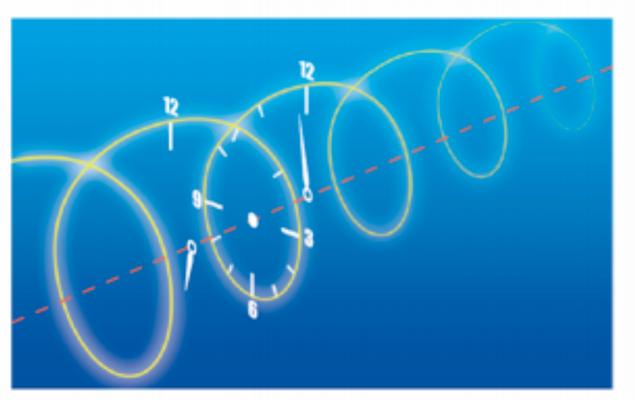Attoclock Principle
The principle of the attoclock exploits the exact timing of a close to circular polarized intense laser field in the two-cycle regime. The rotating electric field vector of a close to circular polarized pulse is used to deflect photo-ionized electrons (or ions) in the radial spatial direction, such that the instant of ionization is mapped to the final angle of the momentum vector in the polarization plane – similar to the minute hand of a clock. Using an ultrafast Ti:sapphire laser in the two-optical-cycle regime for this ‘attoclock’ means that the minute hand of the clock runs over one 360-degree turn of the electric field in about 2.4 fs.
This measurement is exactly based on the definition of “time” by “counting cycles” – here a fraction of a cycle is measured. The measurement provides attosecond timing information without using attosecond pulses – but in principle can also be combined with attosecond pulses. The attoclock provides very high timing accuracy because the measurement is based on “peak search”.
Initial references for attoclock:
Download Attoclock principle – attosecond angular streaking Ref. [272] (PDF, 456 KB)
Download First measurement mit the attoclock with “time zero” calibration Ref. [279] (PDF, 857 KB)
Download 2013 Review on recent attoclock measurements of strong field ionization Ref. [344] (PDF, 751 KB)
Book chapter with more details on attoclock (2013):
C. Cirelli, A. N. Pfeiffer, M. Smolarski, P. Eckle, U. Keller
Download The attoclock: a novel ultrafast measurement technique with attosecond time resolution
Chapter 9, Attosecond Physics, edited by Luis Plaja, Ricardo Torres and Amelle Zair, Springer Verlag, pp. 135-157, 2013
ISBN 978-3-642-37622-1
